MỐI TƯƠNG QUAN GIỮA FENO VÀ MỘT SỐ ĐẶC ĐIỂM LÂM SÀNG, CẬN LÂM SÀNG NGƯỜI BỆNH HEN PHẾ QUẢN ĐIỀU TRỊ TẠI BỆNH VIỆN E
Nội dung chính của bài viết
Tóm tắt
Đặt vấn đề: Đo lường oxit nitric thở ra (FeNO) là một dấu ấn sinh học không những có vai trò gián tiếp trong đánh giá mức độ viêm đường thở mà còn có ý nghĩa trong theo dõi, điều trị hen phế quản. Tuy nhiên, chưa có nhiều nghiên cứu ở Việt Nam đánh giá mối liên quan giữa FeNO với các đặc điểm lâm sàng và cận lâm sàng của hen phế quản. Phương pháp: Nghiên cứu được thực hiện trên 30 người bệnh hen phế quản trên 12 tuổi lần đầu được chẩn đoán hen phế quản theo hướng dẫn của GINA năm 2022 hoặc đã được chẩn đoán hen phế quản nhưng không sử dụng các thuốc điều trị dự phòng ít nhất 03 tháng trước đó tại Bệnh viện E. Các dấu hiệu lâm sàng, đo chức năng hô hấp, FeNO, IgE toàn phần, bạch cầu ái toan trong máu ngoại vi được ghi nhận. Kết quả: Độ tuổi trung bình của nhóm đối tượng nghiên cứu 35,0 ± 19,14 với mức độ từ nhẹ, trung bình và nặng lần lượt là 26,7%, 33,3% và 40%. FeNO trung bình của nhóm đối tượng nghiên cứu là 55,0 ± 52,83 ppb. Nồng độ FeNO có mối tương quan với tắc nghẽn các nhánh phế quản nhỏ FEF25-75 mà không liên quan với FEV1. Bên cạnh đó, tăng FeNO có liên quan với nồng độ IgE toàn phần trong máu ngoại vi. Kết luận: FeNO tăng ở người bệnh hen phế quản lần đầu được chẩn đoán hen phế quản hoặc đang không sử dụng các thuốc điều trị dự phòng. FeNO có mối liên quan với mức độ tắc nghẽn phế quản nhỏ, IgE toàn phần nhưng không tương quan với FEV1 hay mức độ nặng của cơn hen phế quản.
Chi tiết bài viết
Từ khóa
Hen phế quản, FeNO, FEF25-75, bạch cầu ái toan, IgE
Tài liệu tham khảo
2. Khatri SB, Iaccarino JM, Barochia A, et al. Use of Fractional Exhaled Nitric Oxide to Guide the Treatment of Asthma: An Official American Thoracic Society Clinical Practice Guideline. Am J Respir Crit Care Med. 2021;204(10):e97-e109.
3. Expert Panel Working Group of the National Heart L, Blood Institute a, coordinated National Asthma E, et al. 2020 Focused Updates to the Asthma Management Guidelines: A Report from the National Asthma Education and Prevention Program Coordinating Committee Expert Panel Working Group. J Allergy Clin Immunol. 2020;146(6):1217-1270.
4. Phan Thị Hạnh, Phan Thu Phương. Sự biến đổi nồng độ FENO trong theo dõi điều trị bệnh nhân hen phế quản. Tạp chí y học Việt Nam. 2023;525(2):5.
5. Lê Quốc Gia, Phan Thu Phương. Tương quan giữa mức nitric oxide trong khí thở ra với một vài đặc điểm lâm sàng, cận lâm sàng và các mức độ kiểm soát hen ở bệnh nhân hen phế quản người lớn. Tạp chí y học Việt Nam. 2023;520(2):4.
6. Nguyễn Ngọc Quỳnh Lê, Thục Thanh Huyền, Lê Quỳnh Chi, Lê Huyền Trang, Nguyễn Thị Diệu Thuý, Nguyễn Thị Thanh Mai, Dương Quý Sỹ. Lâm sàng, cận lâm sàng và chức năng hô hấp của trẻ hen phế quản có ngưng thở tắc nghẽn khi ngủ. Tạp chí nghiên cứu y học. 2022;150(2):8.
7. Nguyen VN, Chavannes NH. Correlation between fractional exhaled nitric oxide and Asthma Control Test score and spirometry parameters in on-treatment-asthmatics in Ho Chi Minh City. J Thorac Dis. 2020;12(5):2197-2209.
8. Al Ghobain MO, Alsubaie AS, Aljumah WA, et al. The Correlation Between Fractional Exhaled Nitric Oxide (FeNO), Blood Eosinophil Count, Immunoglobulin E Levels, and Spirometric Values in Patients With Asthma. Cureus. 2023;15(2):e35289.


